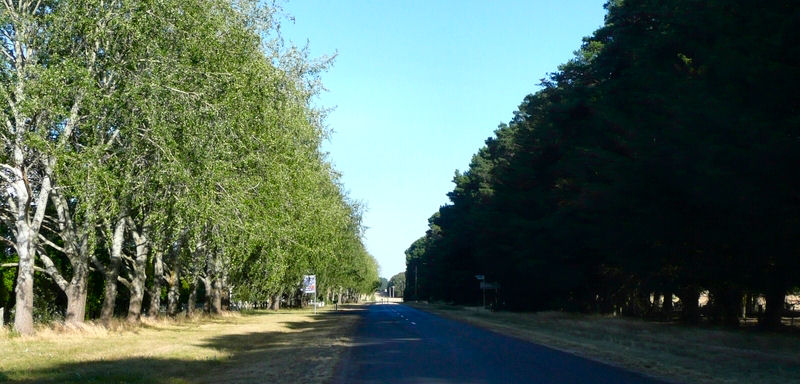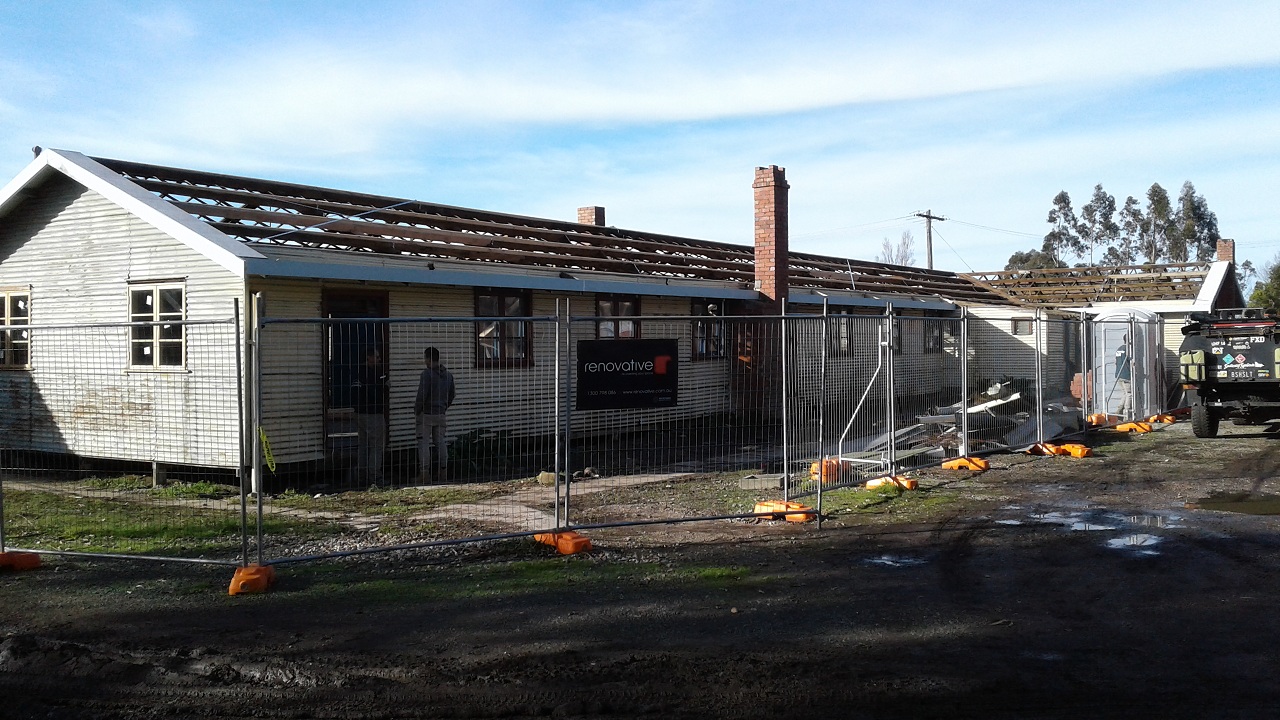|
|
||
|
||
|
Privacy Policy | Editorial Policy | Profit Policy | Join the Association | List of Members | Contact us | Index | Links |
||
|
Back Go to page: 1 2 3 4 5 6 7 8 9 10 11 12 13 14 15 16 17 18 19 20 Forward
|
||
|
|
||
|
The Shrine of Remembrance. Melbourne.
Recently we were in Melbourne and as we had a spare afternoon, we had a look over the Shrine of Remembrance.
The Shrine of Remembrance is a war memorial located in Kings Domain on St Kilda Road.
It was built to honour the men and women of Victoria who served in World War I, but is now a memorial to all Australians who have served in all wars. It is a site of annual observances of ANZAC Day and Remembrance Day and is one of the largest war memorials in Australia.
|
||
|
|
||
|
The main entrance to the Shrine.
|
||
|
|
||
|
Ceremonial Avenue, looking back towards the city from the steps into the Shrine.
|
||
|
Designed by architects Phillip Hudson and James Wardrop who were both World War I veterans, it is built from granite mined from the small Gippsland town of Tynong and originally consisted only of the central sanctuary surrounded by the ambulatory. The sanctuary contains the marble Stone of Remembrance upon which is engraved the words "Greater love hath no man". Once a year, on 11 November at 11 a.m. (Remembrance Day), a ray of sunlight shines through an aperture in the roof to light up the word "Love" in the inscription. (Doesn’t happen now due to daylight saving – click the pic for a bigger view). Beneath the sanctuary lies the crypt, which contains a bronze statue of a soldier father and son and panels listing every unit of the Australian Imperial Force.
The Shrine went through a prolonged process of development which began in 1918 with the initial proposal to build a Victorian memorial. Two committees were formed, the second of which ran a competition for the memorial's design. The winner was announced in 1922, however, opposition to the proposal (led by Keith Murdoch and The Herald) forced the governments of the day to rethink the design and a number of alternatives were proposed, the most significant of which was the ANZAC Square and cenotaph proposal of 1926. In response, General Sir John Monash used the 1927 ANZAC Day march to garner support for the Shrine and finally won the support of the Victorian government later that year. The foundation stone was laid on 11 November 1927, and the Shrine was officially dedicated on 11 November 1934.
|
||
|
|
||
|
The marble Stone of Remembrance. |
||
|
Conception: 1918–1922.
A war memorial in Melbourne was proposed as soon as the First World War
ended in November 1918. In the early 1920s the Victorian state
Opposition and response: 1922–1927
The winning design had a number of supporters, including publications such as The Age nevertheless, the design was also fiercely criticised in some quarters—especially by Keith Murdoch's Herald. As part of the campaign against the Shrine proposal, the Herald searched for alternative concepts, arguing that the funds could be better spent on more practical projects such as a hospital or a war widows' home. Furthermore, some Christian churches also attacked the design as pagan for having no cross or other Christian element.
The new Victorian Labor government of 1924 supported the Herald's view and pushed for a memorial hospital instead of the Shrine. When the Labor government was replaced with a Country/National coalition, the plan changed once again, leaning towards the earlier suggestion of an arch of victory to be built over St. Kilda Road. As a result of the debate, significant delays postponed the construction of the new memorial, so a temporary wood-and-plaster cenotaph was raised for the 1926 ANZAC Day march. The success of the temporary cenotaph led the Victorian government to abandon the earlier project in 1926 and propose instead to build a permanent cenotaph in a large "ANZAC Square" at the top of Bourke St in front of Parliament House. While this would have involved demolishing the Windsor Hotel, one of Melbourne's favourite hotels, the new plan won the support of the Herald, the Returned Soldiers League (RSL) and the Melbourne City Council.
|
||
|
|
||
|
The Hotel Windsor, Spring St, Melbourne. Definitely worth a visit if/when you're in Melbourne - exudes plenty of old world charm.
|
||
|
Nevertheless, both Monash and Legacy still supported the Shrine. After a vote in favour of the Shrine by their executive council, Legacy started a public relations campaign, gaining the support of much of the media—although the council, state government and the Herald continued to oppose it. In 1927, with the then Duke of York, Prince Albert, visiting the country, Monash spoke on the eve of ANZAC Day at the RSL dinner, arguing for the Shrine. The audience had been seeded with supporters, who provided a standing ovation at the conclusion of his speech, which helped to produce a groundswell of support. When a vote was called for, the majority voted in favour of the Shrine proposal. The next day, with Monash leading 30,000 veterans in the 1927 ANZAC Day march and with the new support of the RSL, The Age, and the Argus, the Shrine proposal had gained "new momentum". Faced with such support, and with Monash's arguments that the ANZAC Square would be prohibitively expensive, Edmond Hogan's new Labor government decided in favour of the Shrine.
Another early point of contention (although not explicitly related to the nature of the memorial) concerned the possibility of incorporating a "Tomb of the Unknown Soldier" into the memorial, an approach that was championed by the St. Kilda RSL, who revealed plans to bury a soldier from either Gallipoli or France on ANZAC Day, 25 April 1922. This proposal received considerable debate, and was countered by the argument that the Unknown Warrior in Westminster Abbey represented all of the dead of the British Empire. Monash was on the side of those against such a burial, as while he could see a place for an Unknown Soldier in a national memorial, he did not feel that it would be suitable at the Victorian Shrine. The Stone of Remembrance was later placed in the position where an Unknown Soldier might have been laid. An Australian Unknown Soldier was eventually interred at the Australian War Memorial by Prime Minister Paul Keating on 11 November 1993.
|
||
|
|
||
|
The dedication ceremony for the Shrine of Remembrance (1934). Over 300,000 people were in attendance, approximately a third of Melbourne's population at the time. |
||
|
Construction and dedication: 1927–1934.
The foundation stone was laid on 11 November 1927, by the Governor of Victoria, Lord Somers. Although both the Victorian and Commonwealth governments made contributions, most of the cost of the Shrine ($320,000 out of a total of $5000,000; equating to about $17 million out of $27 million in 2018’s money) was raised in less than six months by public contributions, with Monash as chief fundraiser.
Monash, who was also an engineer, took personal charge of the construction, which began in 1928 and was handled by the contractors Vaughan & Lodge. Monash died in 1931, before the Shrine was finished, but the Shrine was the cause "closest to his heart" in his later years. Work was finally completed in September 1934, and the Shrine was formally dedicated on 11 November 1934 by the Duke of Gloucester, witnessed by a crowd of over 300,000 people, a "massive turnout" given that Melbourne's population at the time was approximately 1 million and, was the "largest crowd ever to assemble in Australia to that date". |
||
|
|
||
|
The Shrine in the 1930s showing the reflecting pool in front of the north face, where the World War II Forecourt is now located |
||
|
Post World War II: 1945–1985
After World War II it was felt necessary to add to the Shrine an element commemorating the Australian war dead of the second great conflict. Once again a competition was run, with A. S. Fall and E. E. Milston as the joint winners. Milston's design was eventually chosen as the one to go ahead and the result was the World War II Forecourt, a wide expanse of stone in front of the Shrine's north face; the Eternal Flame, a permanent gas flame set just to the west of the north face; and the World War II Memorial, a 12.5-metre-high (41 ft) cenotaph a little further west. The Forecourt replaced a reflecting pool that had previously stood in front of the Shrine. These enlargements were dedicated by Queen Elizabeth II on 28 February 1954. Australia's involvements in later wars, such as the Korean War, the Borneo campaign (1945), the Malayan Emergency, the Indonesian Confrontation in North Borneo and Sarawak, the Vietnam War and the Gulf War, are commemorated by inscriptions.
Australia's first eternal flame was lit in Brisbane on Armistice Day in 1930 and is similar in appearance to the eternal flame in Antwerp, Belgium. A press clipping of the time described the flame as "strikingly typical of the Anzac spirit and … while offering a tribute of thankfulness and pride, it should ever remain a beacon of light and inspiration to rising and future generations."
A second Australian eternal flame was lit in the Shrine of Remembrance in Melbourne by the Queen in 1954 and commemorates the dead of the Second World War. The flame was described |
||
|
|
||
|
In 1951 the body of Field Marshal Sir Thomas Blamey, Australia's military commander during World War II, was held at the Shrine for three days for public viewing followed by a State funeral on site. 20,000 people visited the Shrine as he lay in state.
During the Vietnam War the Shrine became a centre of conflict when anti-war demonstrators protested during ANZAC Day services against Australia's involvement in the war. In 1971 the Shrine was defaced when the word PEACE! was painted in large white letters on the pillars of the north portico. |
||
|
|
||
|
In 1985 the Remembrance Garden was added beneath the western face of the Shrine to honour those who served during post-World War II conflicts. |
||
|
|
||
|
Redevelopment: 2002 – present.
Restoration work on the terraces surrounding the Shrine during the 1990s raised once again the possibility of taking advantage of the space under the Shrine: as the Shrine had been built on a hollow artificial hill, the underground chamber (although at the time filled with rubble from the construction) provided a large space for development. At a planned cost of $5.5 million, the new development was intended to provide a visitor's centre, administration facilities and an improved access to the Shrine's crypt, as many of the remaining veterans and their families found the stairs at the traditional ceremonial entrance difficult to climb. |
||
|
|
||
|
In redeveloping the site, special consideration was given to the positioning of the new entrance. The original plan was to use a tunnel from the east, but this was discarded as it had "no sense of ceremony". Instead it was decided to develop two new courtyards and place the new gallery under the northern steps. Construction commenced in 2002, with the design by Melbourne architects Ashton Raggatt McDougall and the new areas were opened in August 2003. The completed project was awarded the Victorian Architecture Medal by the Royal Australian Institute of Architects in 2004.
|
||
|
|
||
|
|
||
|
After this construction was complete, there were still more calls to further
develop the site, and especially to provide facilities for education about
the wars. A $62 million proposal was presented in 2006, incorporating a
museum and an underground
In 2012 the Victorian Government announced that $22.5 million would be allocated to redevelop the Shrine’s underground chamber and extend it to the south. The new exhibition space, known as the "Galleries of Remembrance", was opened on Remembrance Day in 2014. A lifeboat from the ship SS Devanha, deployed during the landing at Anzac Cove at the start of the Gallipoli Campaign in 1915, is a centrepiece of the new development. |
||
|
Management.
The Shrine is managed by the Shrine of Remembrance Trustees, ten individuals appointed by the Governor in Council, on the advice of the Minister for Veterans' Affairs in the Victorian Government. The Trustees are responsible for the care, management, maintenance and preservation of the Shrine and Shrine Reserve.
Traditionally, security for the Shrine has been provided by the Shrine Guard, whose members were men with a military background. All of the original twelve members of the Shrine Guard had won bravery medals during World War I. When the Shrine Guard merged with the Victoria Police Protective Service, some civilians began to serve. During the hours the Shrine is open to the public or in use for any ceremony, they wear a uniform representing an Australian Light Horseman of World War I, with Victoria Police Force insignia.
Roof top.
There is a large open air walkway on the roof top which is reached by quite a number of steep stairs and from which you get a wonderful uninterrupted 360 degree view.
Looking towards the east you over look the 155 year old Melbourne Observatory which sits in the adjacent Royal Botanic Gardens. |
||
|
|
||
|
The Melbourne Observatory – with Government House in the background. |
||
|
The Melbourne Observatory was founded in 1862 to serve as a scientific research institution for the rapidly growing city. It was tasked by the Victorian government with maintaining an accurate time reference for the colony through observations of stars using a transit telescope as well as general astronomical research.
The idea for a Melbourne Observatory was first proposed by English astronomer William Parkinson Wilson in a paper read before The Philosophical Institute of Victoria in 1856; and soon after a committee was formed to "achieve Wilson's 'noble object'". The site chosen was a gentle hill adjacent to the Royal Botanic Gardens.
Shortly after founding, a 48-inch (120 cm) telescope was installed at the observatory for astronomical research and for a while it was the largest fully steerable telescope in the world. This instrument was referred to as the "Great Melbourne Telescope".
In 1874 the observatory took part in the worldwide effort to observe the Transit of Venus in order to better determine the distance of Earth to the Sun. Towards the end of the 1880s the observatory took part in the international "Carte du Ciel" project to map the heavens using the, then novel, technique of photography. Being the most southerly of the sites taking part, Melbourne was assigned the region around the south celestial pole south of declination -65°.
With the coming of federation in 1901 the Commonwealth government was assigned the responsibility for astronomy and time-keeping and control of the observatory was gradually handed over by the state government. At the same time, the encroaching light pollution from the growing city of Melbourne gradually made quality astronomical observations increasingly difficult. Then, in 1933 the flood-lit Shrine of Remembrance was completed in the parkland adjacent to the observatory impacting its skies further, until the observatory was finally closed in 1945. Most of the scientific equipment and instruments, including the Great Melbourne Telescope, were sold or moved elsewhere.
Today, while most of the original buildings still stand on the site, only two of the original instruments remain. Both were installed in 1874 to observe the transit of Venus. One is an 8-inch (20 cm) refracting telescope and the other is a fully restored 4-inch (10 cm) Photoheliograph. The Photoheliograph is privately owned and on indefinite loan to the Astronomical Society of Victoria. The building which was used by the 13-inch (330 mm) astrograph telescope for the "Carte du Ciel" survey now houses a 12-inch (300 mm) Newtonian reflector telescope owned by the Astronomical Society of Victoria.
The Great Melbourne Telescope was eventually moved to the Mount Stromlo Observatory where it was badly damaged in the 2003 Canberra bushfires and a project is underway to restore the telescope to working order so that it may be used for educational and public viewing in its original home at the Melbourne Observatory. This is a joint undertaking of Museum Victoria, the Astronomical Society of Victoria and the Royal Botanic Gardens. The restoration project will incorporate bringing the telescope's optical, mechanical and electrical systems into line with current best practice. After more than five years weighing up different proposals, engineering work commenced in late 2013 thanks to a $70,000 grant from the Copland Foundation.
If you’re ever in Melbourne and you’ve got a free afternoon, we would strongly suggest you grab the tram and visit the Shrine – it is definitely worth a visit. The Observatory is not open to the public during the day, it caters for organised group tours only.
|
||
|
WORDS THAT ARE DOWNRIGHT IMPOSSIBLE TO SAY WHEN DRUNK:
No thanks, I’m married.
|
||
|
Former Ballarat Base
The former Base at Ballarat was 7 km northwest of Ballarat city centre and was constructed in 1940, at the outset of the Second World War, as a training school for Wireless Air Gunners under the Empire Air Training Scheme (EATS). The Scheme was established by the British with Canada, Australia and New Zealand in order to rapidly train air crews for the British Bomber Command to fight the then far superior German Air Force. Under EATS which operated from 1939-1945 the RAAF was committed to training 28,000 aircrew over three years including navigators, wireless operators, air gunners and pilots, equating to around 900 aircrew every four weeks. |
||
|
|
||
|
To achieve this the RAAF embarked on a rapid and extensive program
establishing a network of 28 EATS schools in eastern Australia by the end of
1941, each specialising in specific skill sets required of air crew members.
The former Ballarat Base was Australia's No.1 Wireless Air Gunners
By 1941 there were nearly 800 personnel on the former Ballarat Base and by the end of March 1942 a total of 1,238 airmen had been trained in the operation of radio equipment and guns using Avro Anson and Wackett aircraft. A radar training wing was also established in 1945. Basic training for wireless operators ceased in May 1945 by which time 5025 trainees has been through the school.
In consequence of the United States declaring war on Japan in Dec 1941 a
strategic alliance with Australia was formed and in 1942 the Base was
extended to accommodate a Liberator Bomber Squadron to assist in the
prosecution of the Pacific War and in the strategic defence of Australia.
The US forces camped immediately south of the residential area of RAAF Base
where they constructed the Liberator Air Strip for use by their B24
The Wireless Air Gunners School was formally disbanded in January 1946. The RAAF continued to operate the aerodrome until 1961 when it became the property of the Ballarat Council. The Ballarat Aerodrome continues to operate as a civil airport and the surviving Second World War structures on the site provide accommodation for a large number of community organisations including an aviation museum.
The existing Second World War structures associated with the WAGS are primarily 'P-Type Huts' and Bellman Hangars neither of which were originally intended to be permanent structures, having been prefabricated and erected on military sites throughout Australia in response to the sudden and urgent need for semi-permanent accommodation for service personnel and for aircraft hangars at the beginning of the Second World War. The P-Type Huts, consisting of a simple timber and corrugated iron box with a gabled roof usually with doors at each end could be easily modified as required for particular functions. By 1941 approximately 160 standard P-Type Huts had been erected on the Ballarat site in two distinct functional precincts.
In the northern aerodrome precinct around fifteen huts, of which twelve
survive, were arranged on the outside of a group of four Bellman
Other remaining fabric associated with the Second World War includes an elevated water tower, the foundations of demolished P-Type Huts and other structures and in the southern part of the site, the archaeological remains of the United States Air Force camp and the 'Liberator Air Strip'. Landscape features associated with the former Ballarat RAAF Base include road layout and the playing fields and parade ground with its border of Monterey Cypress (Cupressus Macrocarpa) that separate the aerodrome precinct to the north from the central domestic and administrative precinct.
|
||
|
|
||
|
The former Base is now of historical and social significance to the State of Victoria for its ability to demonstrate the importance of military aviation to the defence of Australia and its Allies during the Second World War, the first conflict in which aircraft played a major role in combat for the Australian military.
It also has historical significance for its association with the technical training aspects of the wartime development and operation of the RAAF. The former Base is a representative example of the bases constructed to train aircrew under the Empire Air Training Scheme that included a contingent suite of temporary and semi temporary buildings that in their layout and surviving the Second World War fabric reflect both the training and domestic functions of the bases and the hierarchical nature of the military and domestic life on the Second World War bases. This contingent planning is clearly reflected in the two precincts of the former Base - the aerodrome itself with the large prefabricated Bellman hangars and workshop huts, and the domestic and administrative precinct of standard P-Type Huts.
RAAF Ballarat is the most intact surviving Victorian example of the training schools that were rapidly constructed across Australia specifically to train aircrews under the Empire Air Training Scheme in the early years of the Second World War and representative of the inventive ways in which functional requirements of the military were satisfied during the war. It was the first of three Wireless Air Gunnery Schools established nationally under the Scheme and the only such school in Victoria.
It is of social significance, providing an opportunity to educate about the operations of the Air Force throughout the Second World War, in particular the relationship of the Commonwealth allies against the German forces, particularly later in the war when personnel trained here were dispersed with others to serve with the RAF in Europe, and subsequently the increasing importance of the United States and Australian alliance during the Pacific campaign against the Japanese.
EX RAAF Buildings, Ballarat Airport.
In more recent times, following the declaration of the Heritage listing of the remaining RAAF buildings at the Ballarat airport, followed by a period of agitation of the Ballarat Mayor/City Council, predominantly by Keith Pitman of the Ballarat Branch of RAAFA (now AFA), finance was finally approved for the renovation of the rapidly decaying remaining buildings.
Such renovation is now well under way and the renovation of Hut 48, a former 1WAGS building, later used as the officers' mess, is of particular interest to Air Force Association Ballarat Branch where they are to be allocated space for their offices.
Following a tremendous amount of research work, initially by Ballarat AFA president Tom Roberts, a huge amount or records collected by him are continuing to be sifted through by a 1Wags Working Group led by Peter Schoutens.
Peter Schoutens's vision is to get all this information collated, checked, and checked again, with the view of the establishment of a memorial to those 1WAGS Ballarat trainees who were killed in action. While it is still too early to talk about type or location of such a memorial, one possibility would be at the front of the renovated Hut 48 which will then be the location of the Air Force Association Ballarat Branch offices.
However, before any permanent memorial can be put in place the 1WAGS working group will ensure that no permanent type memorial will be established until the list of 1WAGS trainees killed-in-action is confidently 100% complete.
If you are ex-WAG, or if you know someone who is ex-Wag, please let us know HERE and we'll pass on your details to Peter Schoutens, he's trying to contact as many ex-Wag people as he can.
The photograph below of the renovation of Hut 48 is supplied compliments of the Air Force Association Ballarat branch .
Click HERE to see other photos of the old Base.
|
||
|
Sorry, but you’re really not my type.
|
||
|
Chevy Collection.
If you’re an American Car buff, you’ll like this collection. Dennis Albaugh, who lives in Ankeny, Iowa, in the good old US of A, has a personal and private collection of 110 plus Chevrolet convertibles, all years from 1912 to 1975 and Corvette convertibles from 1953 to 1975.
There is a Chevy convertible from every year of manufacture except 1939, the reason? - Chevy didn't make a convertible in '39 -- and ended its convertible line in '75!.
He made his fortune selling farm chemicals - and you can see the cars HERE. |
||
|
|
||
|
Thank you, but I won’t make any attempt to dance. I have no coordination and would hate to look like a real fool!
|
||
|
|
||
|
|
||
|
|

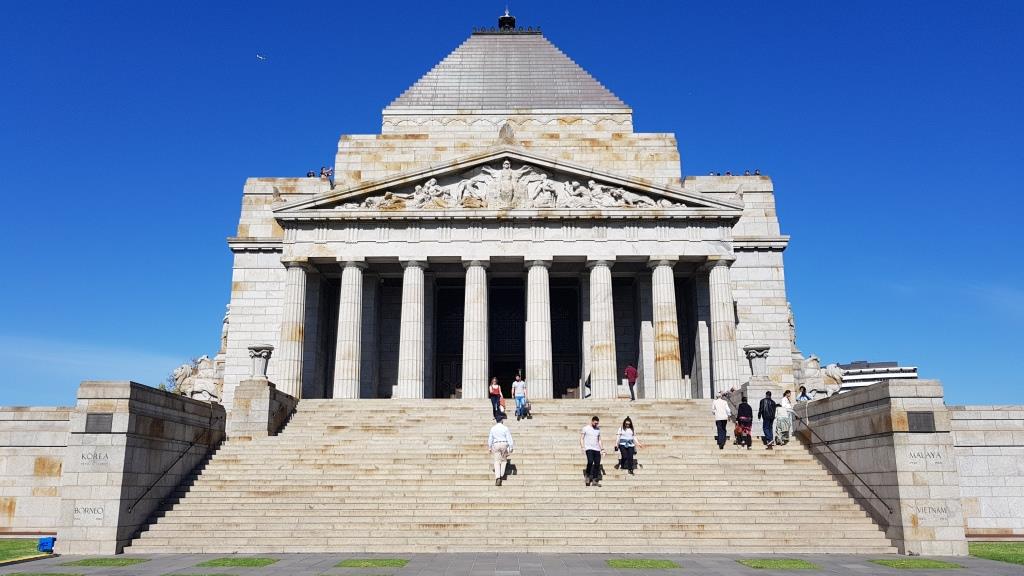
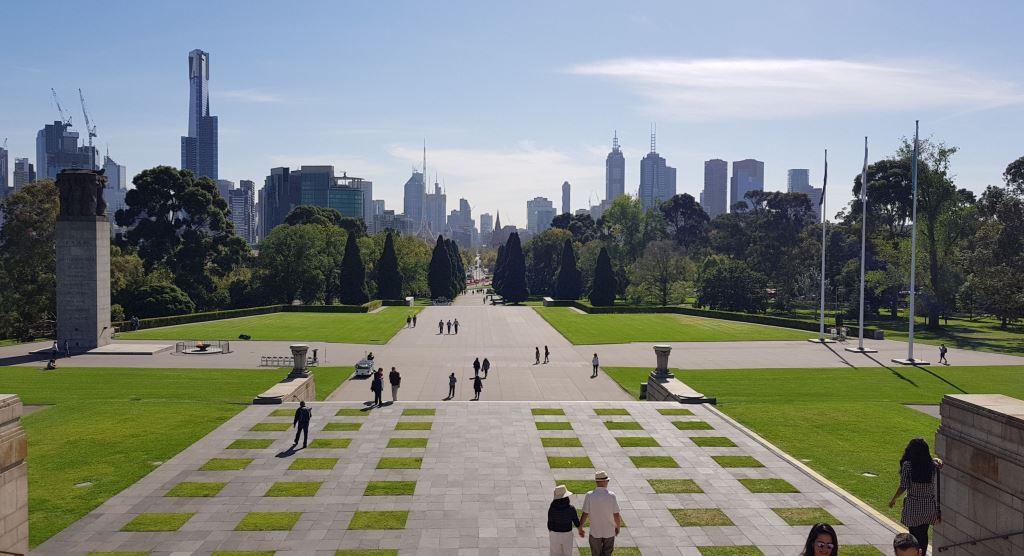
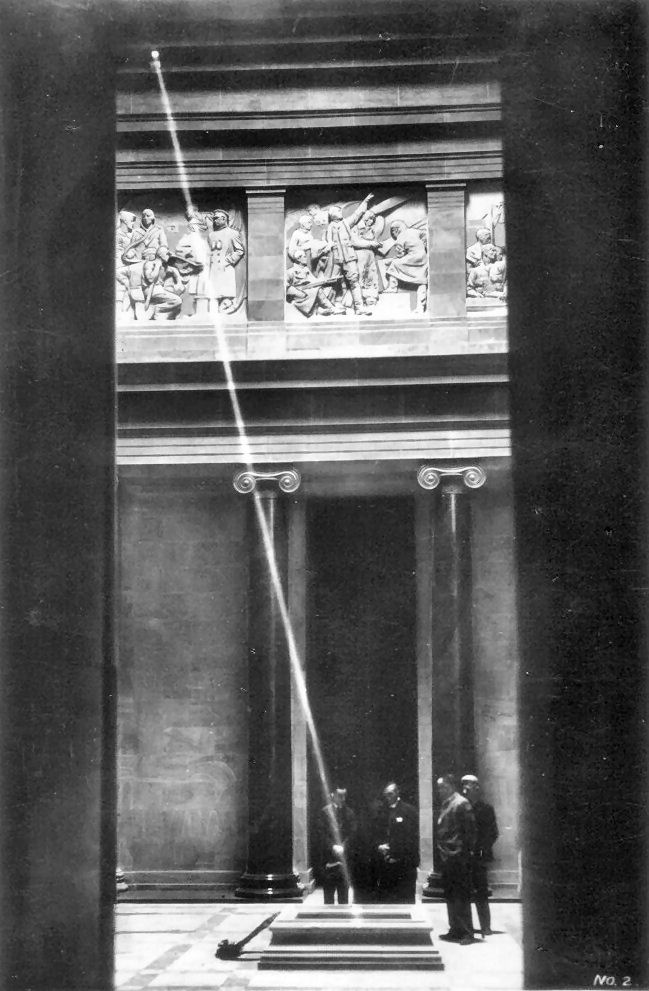
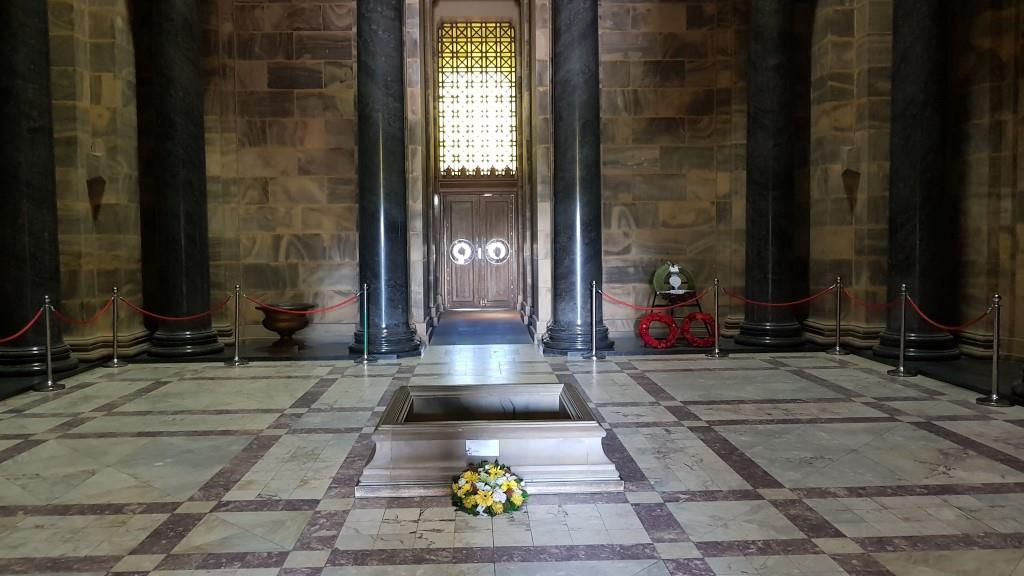
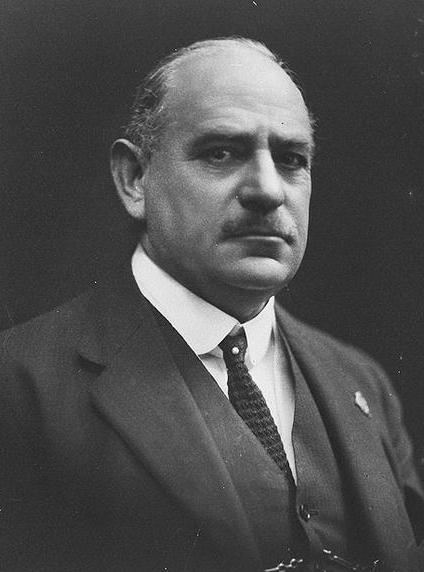 government
appointed the War Memorials Advisory Committee, chaired by Sir Baldwin
Spencer, which recommended an "arch of victory" over St Kilda Road. In
August 1921 an executive committee was formed with the former commander of
the Australian forces in the war, General Sir John Monash, (left) as its
driving force. The committee soon abandoned the idea of an arch and proposed
a large monumental memorial to the east of St Kilda Road, a position which
would make it clearly visible from the centre of the city. A competition was
launched in March 1922 to find a design for the new memorial, open both to
British subjects residing in Australia and any Australian citizens who were
residing overseas. A total of 83 entries were submitted and in December 1923
the design offered by two Melbourne architects Phillip Hudson and James
Wardrop, was announced as the winner.
government
appointed the War Memorials Advisory Committee, chaired by Sir Baldwin
Spencer, which recommended an "arch of victory" over St Kilda Road. In
August 1921 an executive committee was formed with the former commander of
the Australian forces in the war, General Sir John Monash, (left) as its
driving force. The committee soon abandoned the idea of an arch and proposed
a large monumental memorial to the east of St Kilda Road, a position which
would make it clearly visible from the centre of the city. A competition was
launched in March 1922 to find a design for the new memorial, open both to
British subjects residing in Australia and any Australian citizens who were
residing overseas. A total of 83 entries were submitted and in December 1923
the design offered by two Melbourne architects Phillip Hudson and James
Wardrop, was announced as the winner. 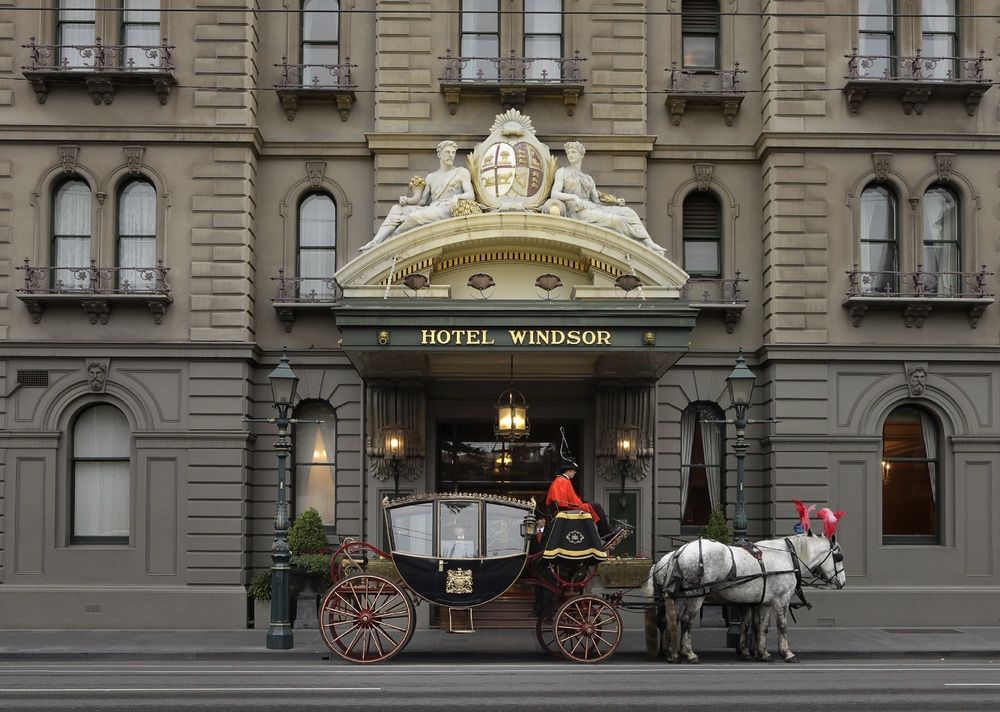
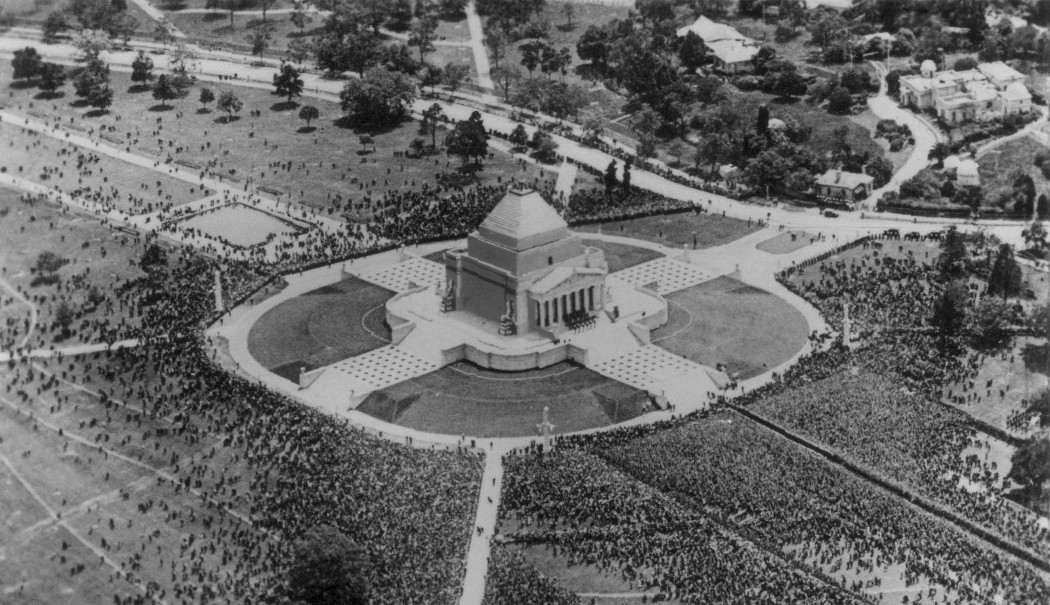
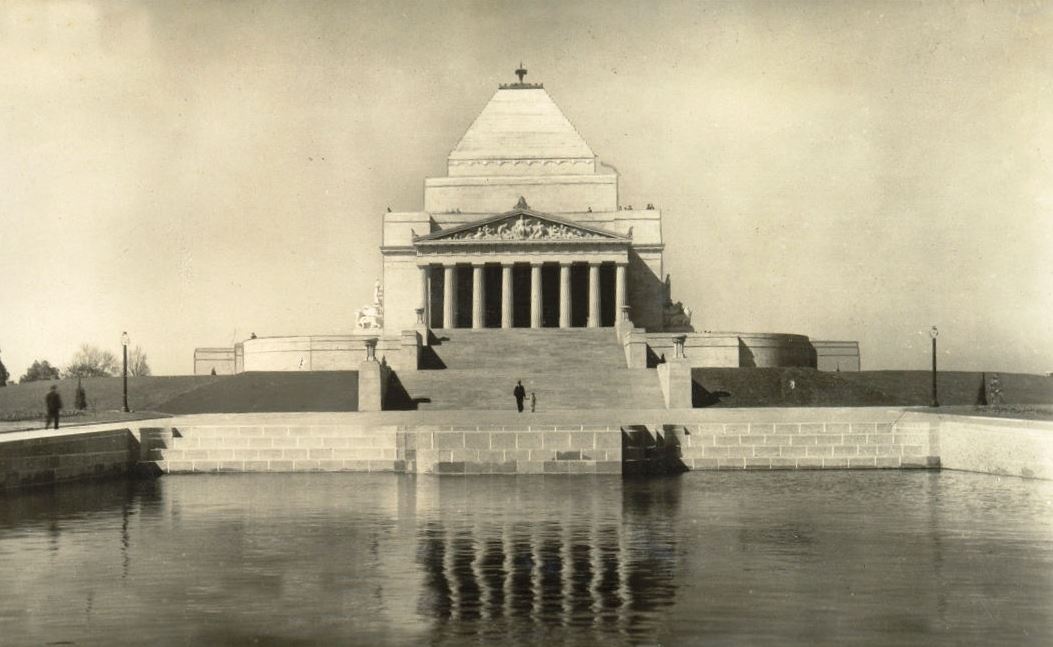
.jpg)
%202.jpg)

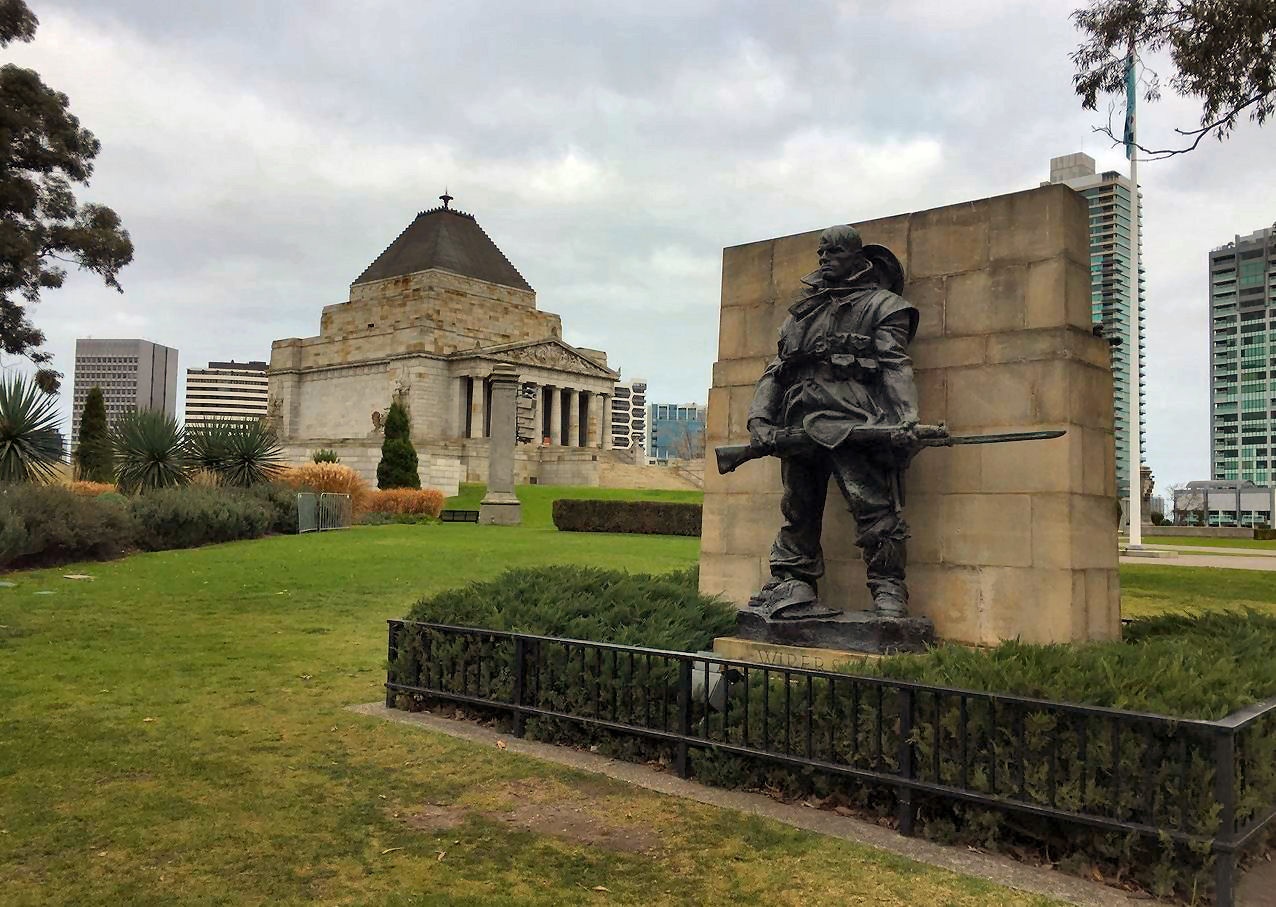
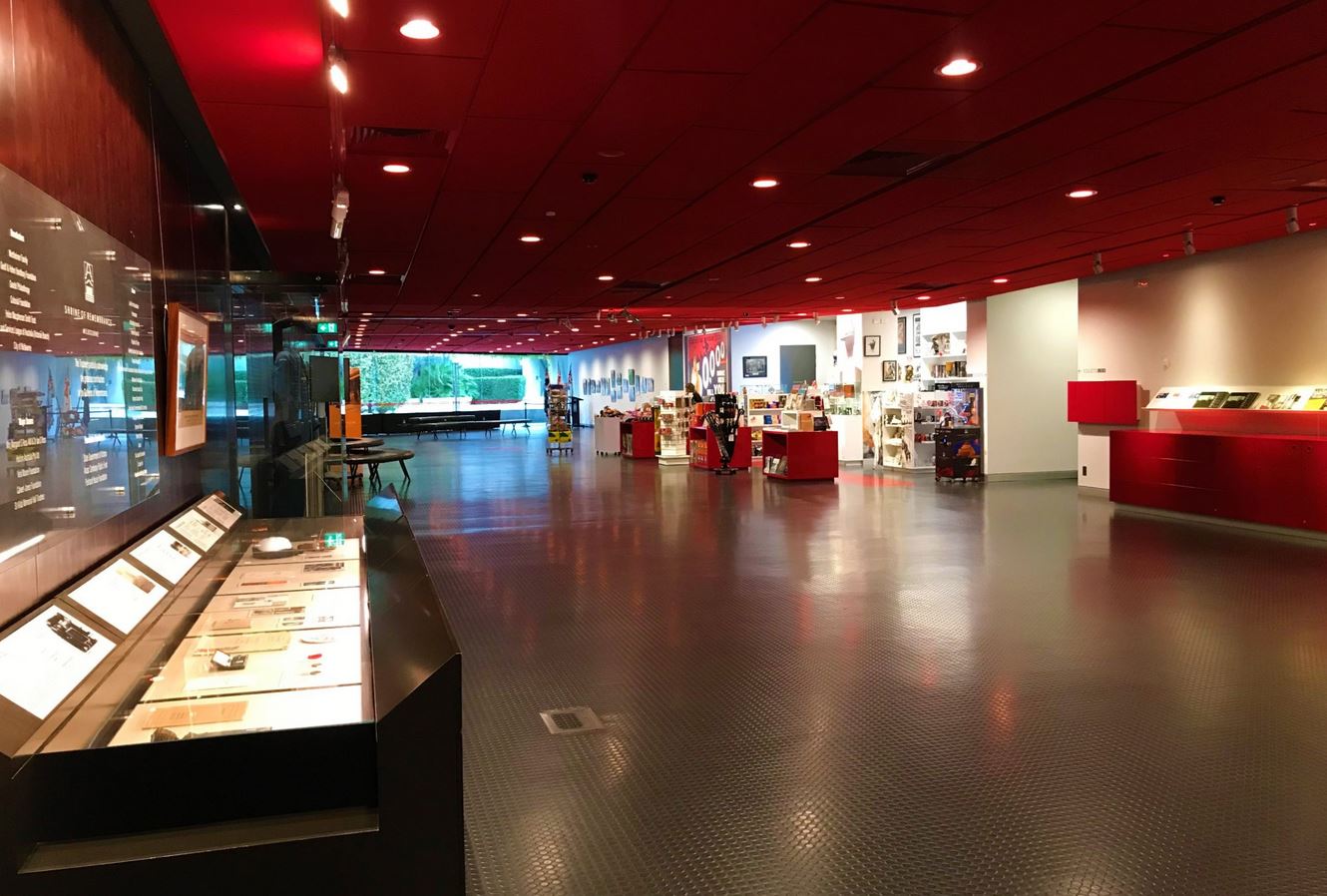
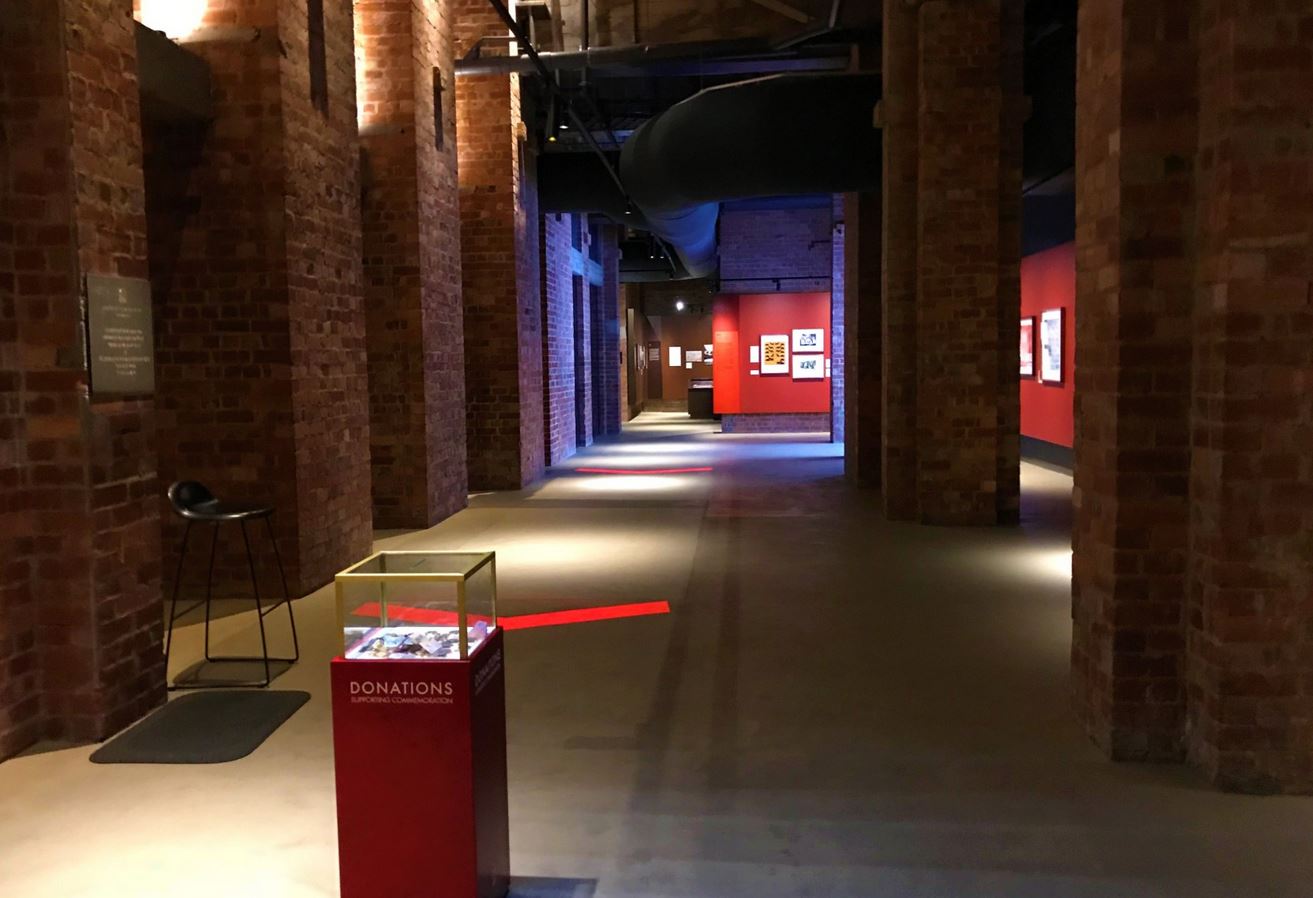
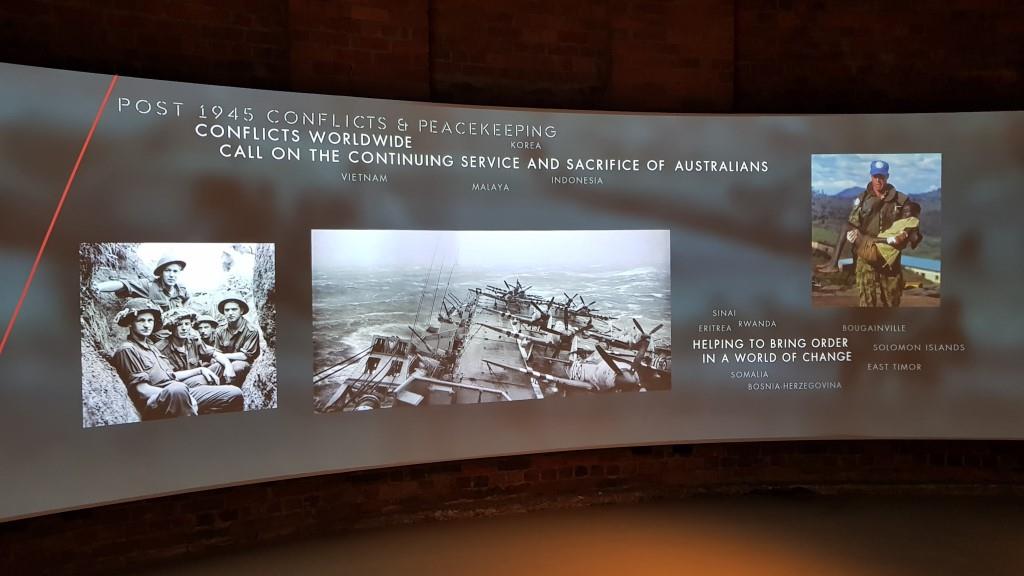
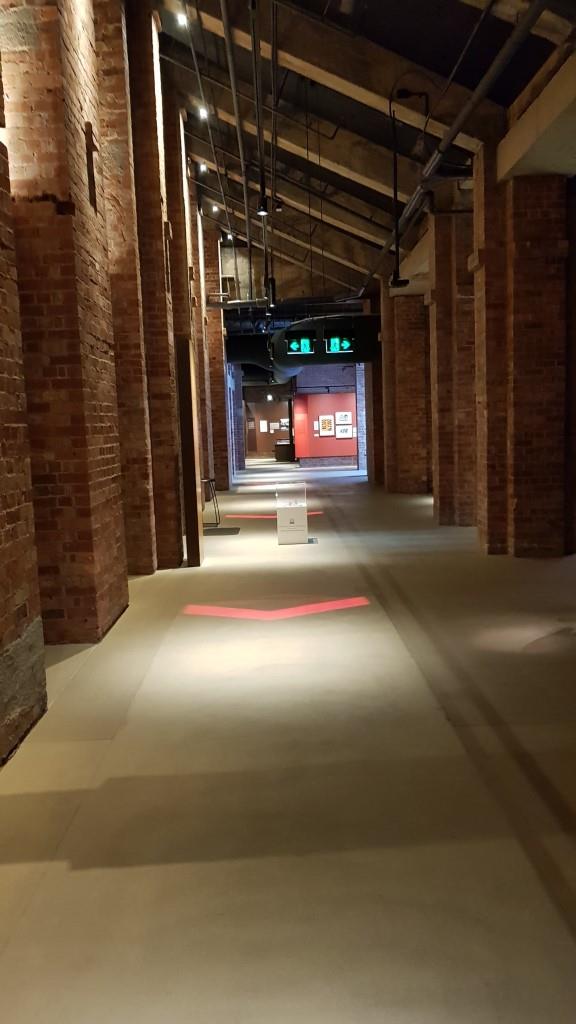
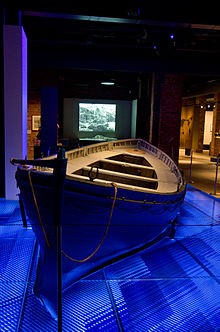 carpark.
Designed once again by Ashton Raggatt McDougall, the proposal was opposed by
local residents and some council members and ran into significant funding
problems when the Federal Government decided not to provide funding.
carpark.
Designed once again by Ashton Raggatt McDougall, the proposal was opposed by
local residents and some council members and ran into significant funding
problems when the Federal Government decided not to provide funding.
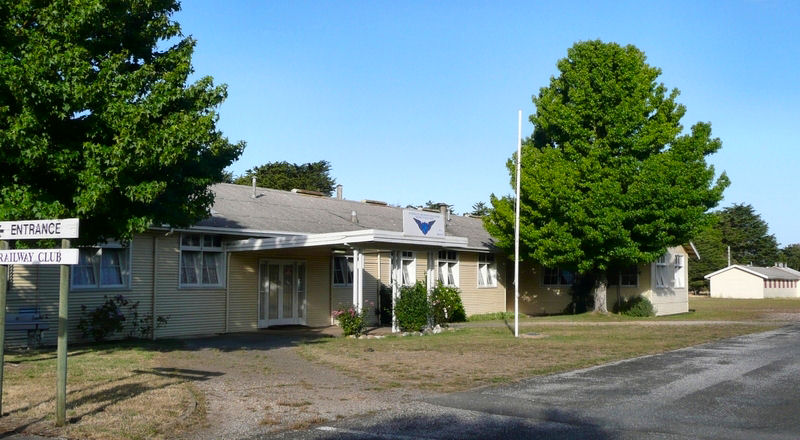
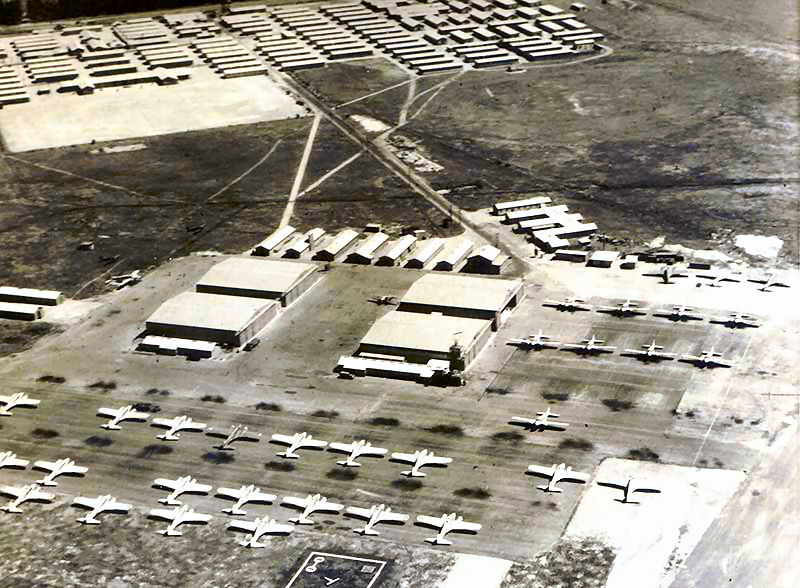 School (WAGS), the first of three WAGS created under the Scheme and the only
one in Victoria. (Click
School (WAGS), the first of three WAGS created under the Scheme and the only
one in Victoria. (Click 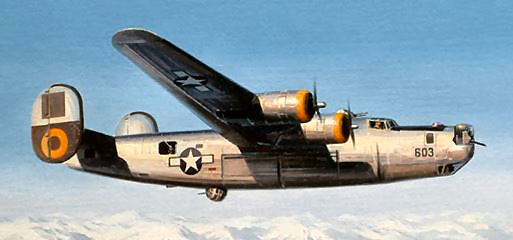 bombers,
large planes for the long range bombing missions required in the Pacific. By
1943 there were 80 United States aircraft at the base.
bombers,
large planes for the long range bombing missions required in the Pacific. By
1943 there were 80 United States aircraft at the base.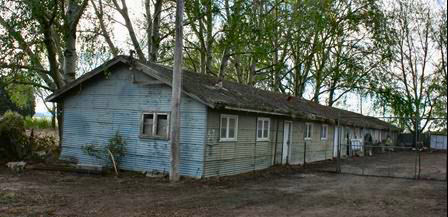 angars
arranged in pairs a few metres apart. Bellman hangars had been designed in
Britain immediately prior to the Second World War to provide a fast,
economical solution to the need for aircraft facilities. The surrounding
P-Type Huts were used for equipment and clothing storage, maintenance and
administrative functions associated with the operation of the aircraft. At
the centre of the base was the administrative, domestic and teaching
precinct where over 140 huts were erected in rows, singly or in combination
with additional roofs to create larger buildings. They were adapted for
various uses including sleeping quarters, recreation rooms and messes,
lecture halls, radio huts, stores, offices, workshops and ablution blocks.
Thirty four huts remain in the central precinct. These include the former
Officers' and Sergeants' Messes, sleeping quarters, ablution blocks,
Headquarters, the maintenance and transport depot, stores, the gymnasium and
several ablution blocks.
angars
arranged in pairs a few metres apart. Bellman hangars had been designed in
Britain immediately prior to the Second World War to provide a fast,
economical solution to the need for aircraft facilities. The surrounding
P-Type Huts were used for equipment and clothing storage, maintenance and
administrative functions associated with the operation of the aircraft. At
the centre of the base was the administrative, domestic and teaching
precinct where over 140 huts were erected in rows, singly or in combination
with additional roofs to create larger buildings. They were adapted for
various uses including sleeping quarters, recreation rooms and messes,
lecture halls, radio huts, stores, offices, workshops and ablution blocks.
Thirty four huts remain in the central precinct. These include the former
Officers' and Sergeants' Messes, sleeping quarters, ablution blocks,
Headquarters, the maintenance and transport depot, stores, the gymnasium and
several ablution blocks.